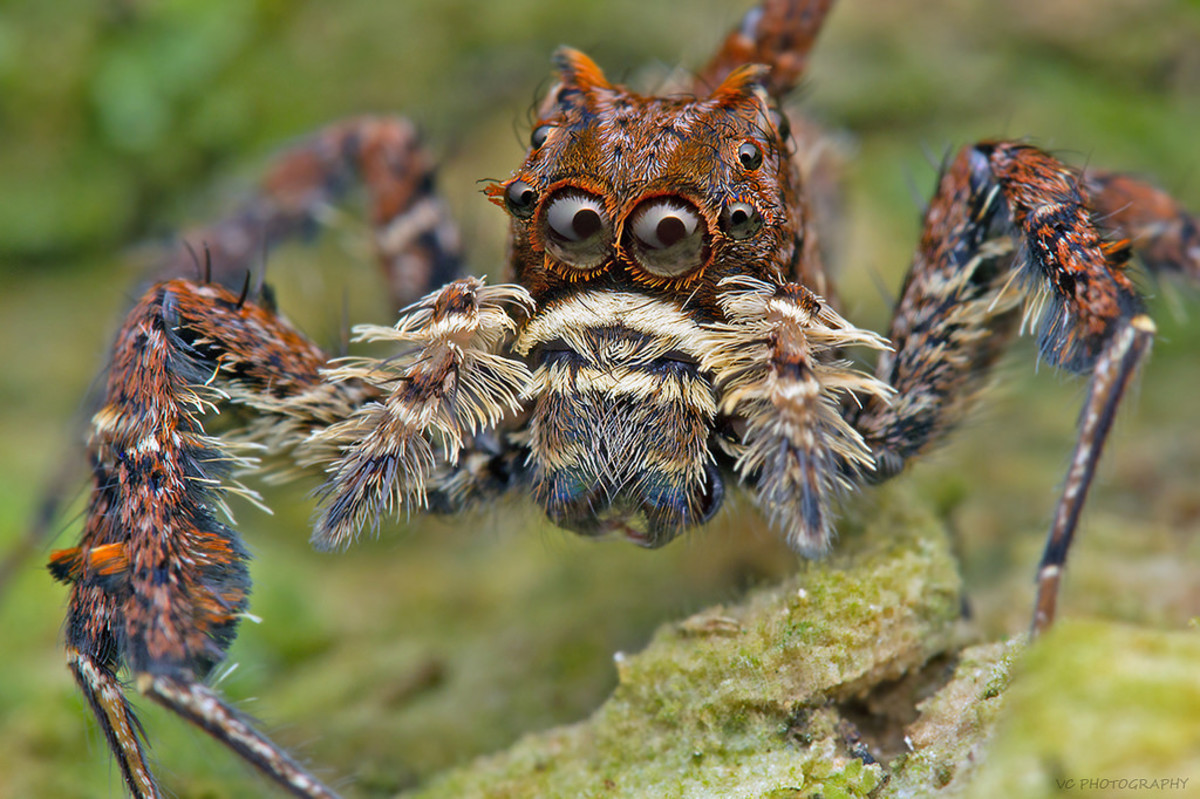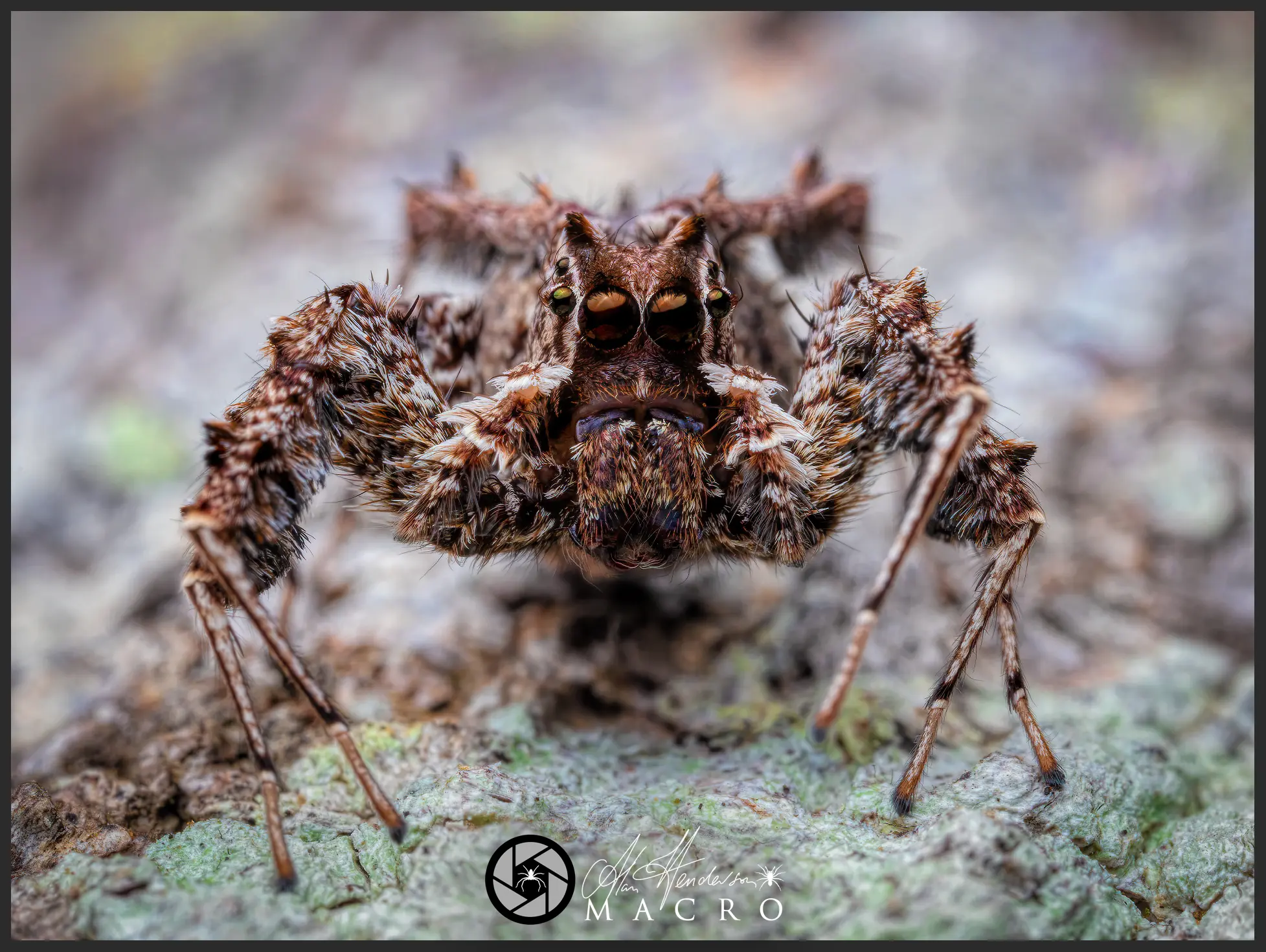Jumping Spiders: Intelligence Secrets Unveiled!
Can a creature with a brain the size of a pinhead possess impressive intelligence? The answer, surprisingly, is a resounding yes, and the evidence lies in the fascinating world of jumping spiders.
The conventional wisdom often equates intelligence with brain size. Its a reasonable assumption; larger brains typically allow for more complex cognitive processes. However, the animal kingdom consistently throws curveballs at our preconceived notions. Jumping spiders, belonging to the family Salticidae, are a prime example. These arachnids, despite their minuscule brains, exhibit behaviors and cognitive abilities that challenge our understanding of what it means to be intelligent. Their remarkable hunting strategies, problem-solving skills, and visual acuity place them at the forefront of invertebrate intelligence, rewriting the rules of cognitive biology.
| Attribute | Details |
|---|---|
| Genus | Portia |
| Family | Salticidae (Jumping Spiders) |
| Common Name | Fringed Jumping Spider, Portia |
| Size (Typical) | 5-15 mm (varies by species) |
| Habitat | Found in Africa, Asia, and Australia |
| Notable Traits | Exceptional vision (tetrachromatic color vision), sophisticated hunting strategies, cognitive abilities including mental representation. |
| Brain Size | Approximately the size of a quarter of a baby aspirin. |
| Intelligence Indicators | Strategic hunting, detour behavior, prey-specific attack planning. |
| Reference | Britannica - Jumping Spider |
The study of animal intelligence is inherently complex. Applying human-centric metrics to assess the cognitive abilities of creatures so different from ourselves is a challenge. Yet, within the spider world, one genus consistently emerges as a frontrunner in the intelligence stakes: Portia. These spiders, particularly the species Portia fimbriata, have captured the attention of researchers due to their sophisticated behaviors and cognitive prowess. From planning elaborate detours to ambush prey to exhibiting what appears to be mental mapping, Portia spiders demonstrate an impressive capacity for problem-solving and adaptation.
- Diva Flawless Age Bio Tiktok More Everything You Need To Know
- Lara Rose Onlyfans Leak What Happened What To Know
The reputation of spiders as simple, instinct-driven creatures is increasingly outdated. Research has shown that they possess remarkable cognitive abilities. Ghost spiders, for instance, have been trained to associate positive reinforcement with the smell of vanilla, while orb weavers construct webs tailored to capture specific prey types. These examples illustrate that spider intelligence is more nuanced than previously believed, paving the way for a reevaluation of the cognitive capabilities of these eight-legged wonders.
One of the most remarkable aspects of Portia spiders is their hunting prowess. They dont simply react to prey; they strategize. These spiders are known to plan attacks, often taking indirect routes and employing tactics tailored to the specific species they are hunting. This level of planning, combined with their keen eyesight, sets them apart in the animal kingdom.
The visual acuity of jumping spiders is exceptional, a crucial factor in their predatory success. They possess four pairs of eyes, arranged to provide near-360-degree vision. This advanced visual system allows them to accurately assess distance, track movement, and identify potential threats or prey with remarkable precision. Their visual capabilities even extend to color perception, some species likely possessing tetrachromatic vision.
- Alice Rosenblum Latest Updates Leaks Instagram News
- Alice Rosenblum Latest News Leaks Community Updates Explore Now
The "intelligence" of jumping spiders, as defined by their behavior, isn't limited to a single trait or action, but instead represents a complex constellation of interrelated skills and adaptations. These include, but are not limited to, advanced vision, adaptive hunting techniques, and remarkable adaptability in various ecological contexts.
Researchers, recognizing the importance of understanding such intelligence, are asking many questions. The scientific research about specific types of intelligence that particular jumping spiders exhibit is in progress.
The term "intelligence" is not uniform. It is crucial to consider that spider intelligence is not about complex human constructs such as abstract thought or moral judgement; instead, it is centered on the practical matters of survival, such as finding, catching, and eating other animals. Portia is successful in all those.
The genus Portia, found across diverse environments, including Africa, Asia, and Australia, demonstrates a remarkable ability to adapt to different ecological niches. Their adaptability is reflected in their hunting strategies, which vary according to the prey they target, primarily other spiders. This adaptability is, in itself, a strong indicator of cognitive flexibility.
The fact that these spiders have the cognitive ability to form mental images is a significant finding. It suggests that they can anticipate and predict, showcasing a level of cognitive sophistication that was previously unexpected. Furthermore, they exhibit a sense of surprise when encountering unexpected situations, a behavior that further supports the idea of mental representation.
The fringed jumping spider (Portia fimbriata) is considered to be the most intelligent. This species showcases remarkable patience and craftiness. This spiders brain is about the size of a quarter of a baby aspirin.
The discovery that they employ mental representation is a significant advancement in our comprehension of their cognitive processes. It suggests an ability to create internal models of their environment and anticipate the outcomes of their actions, setting them apart from many other invertebrate species.
In contrast to many vertebrates, the remarkable behaviors, extraordinary vision, and multifaceted adaptations of jumping spiders emphasize a level of intelligence and adaptability. Their hunting capabilities and adaptability, demonstrate the cognitive abilities present in this genus.
The genus Portia, initially established in 1878 by Friedrich Karsch, has undergone molecular phylogeny to understand its relation to other jumping spider species. This scientific method compares the DNA to create the tree of life. The results have confirmed that Portia belongs to a basal clade and is the foundation for other spiders.
The unique hunting tactics and strategic planning exhibited by Portia spiders set them apart in the animal kingdom. They are capable of altering their approaches based on the type of prey they pursue, mostly other spiders. This flexibility is a clear indication of the adaptability of these arachnids.
The intricate behaviors and cognitive capabilities of jumping spiders, particularly those in the genus Portia, have led to a paradigm shift in how we perceive the intelligence of invertebrates. Rather than simply being driven by instinct, these spiders demonstrate complex problem-solving abilities and an awareness of their environment. These small creatures challenge our presumptions about cognitive potential, revealing the amazing diversity of intelligence in the animal kingdom.
Jumping spiders, defy the conventional idea that high intelligence is contingent upon a sizable brain. In contrast to the prevailing logic that assumes high intelligence is directly proportional to brain size, these spiders stand as an exception. They demonstrate that cognitive sophistication can emerge from comparatively simple neural structures. This has far-reaching ramifications for the field of cognitive biology.
Their ability to navigate complex environments and their proficiency in manipulating their environment showcase remarkable cognitive capabilities that challenge our traditional understanding of animal intelligence. Jumping spiders have revealed to the world the surprising extent to which animals can excel at a cognitive level, despite the constraints of their size and biological framework.
The case of the jumping spider, particularly the genus Portia, provides a fascinating illustration of how intelligence can manifest in surprising and unexpected forms. The ongoing study of these arachnids continues to reveal new insights into the nature of intelligence. Their behaviors are helping reshape our understanding of what it means to be intelligent.



Detail Author:
- Name : Joanne Goyette
- Username : lola.lemke
- Email : grant.jayson@mitchell.org
- Birthdate : 1986-04-13
- Address : 99572 Bernhard Skyway Apt. 119 Mariettafurt, CT 61562
- Phone : +13367135535
- Company : Schmitt-Okuneva
- Job : Paperhanger
- Bio : Enim et natus accusantium molestiae labore sed. Quia fuga cum recusandae. Quisquam et est voluptatibus. Dicta omnis et et veritatis incidunt saepe neque.
Socials
facebook:
- url : https://facebook.com/mcglynn1991
- username : mcglynn1991
- bio : Totam voluptatum perferendis non fugiat non quo repellat quia.
- followers : 1183
- following : 773
instagram:
- url : https://instagram.com/mcglynnj
- username : mcglynnj
- bio : Doloremque provident ipsum repellendus at eius. Facere repellat qui aut.
- followers : 5280
- following : 1075
linkedin:
- url : https://linkedin.com/in/mcglynn2003
- username : mcglynn2003
- bio : Debitis qui dolorum inventore.
- followers : 3987
- following : 1029
tiktok:
- url : https://tiktok.com/@mcglynn1976
- username : mcglynn1976
- bio : Maxime perferendis rerum qui. Quis eius molestiae quasi illo quidem non.
- followers : 614
- following : 279
twitter:
- url : https://twitter.com/jaqueline_mcglynn
- username : jaqueline_mcglynn
- bio : Amet repellat blanditiis aut. Perspiciatis rem aperiam qui iure expedita quis nam. Et cumque sit quisquam expedita. Et eum laboriosam consequatur eos.
- followers : 1820
- following : 1214